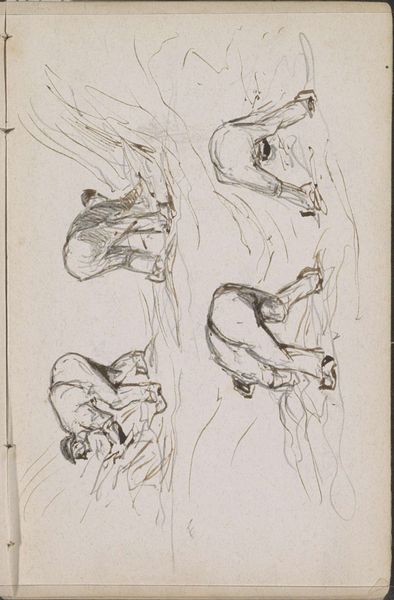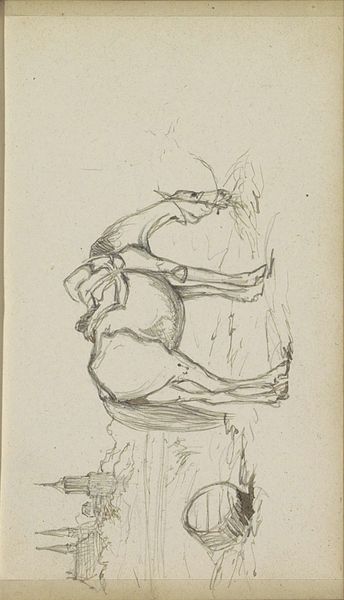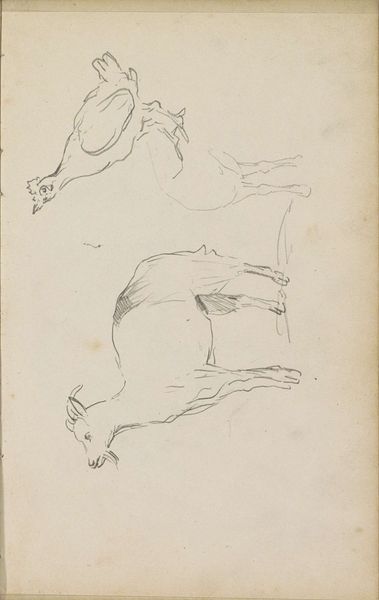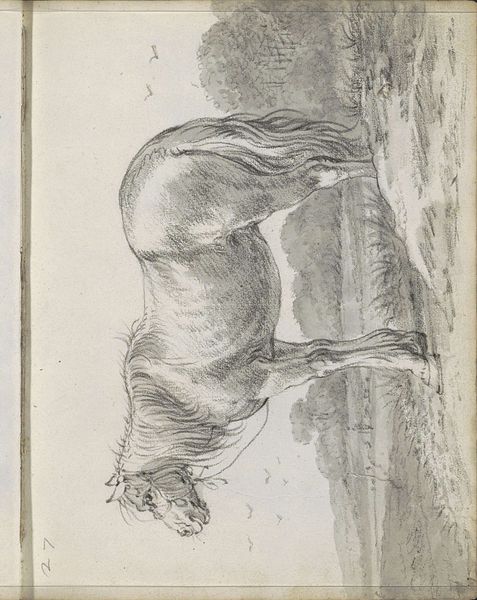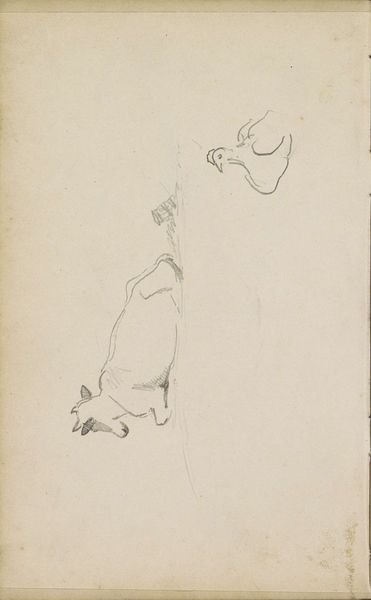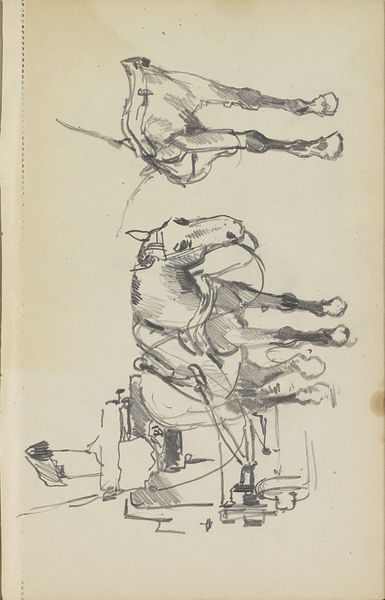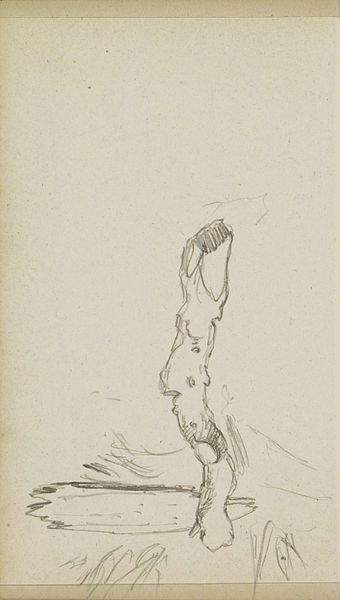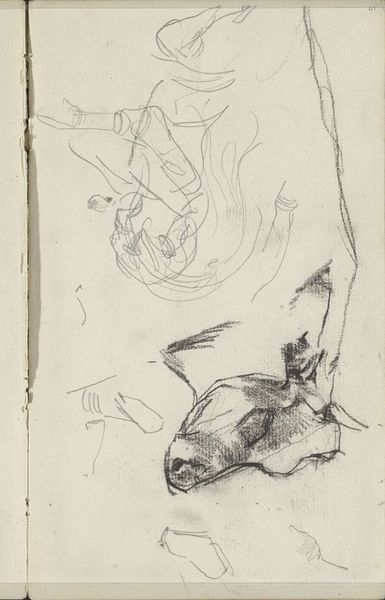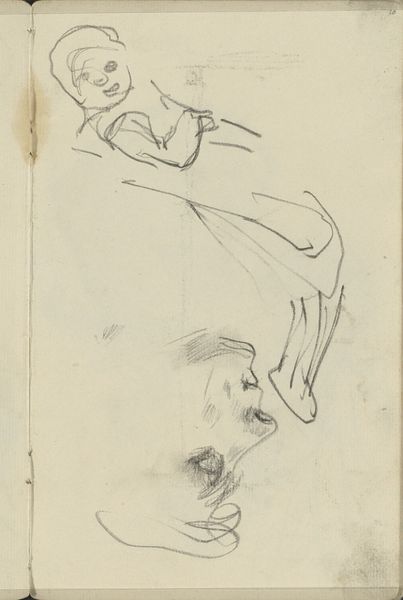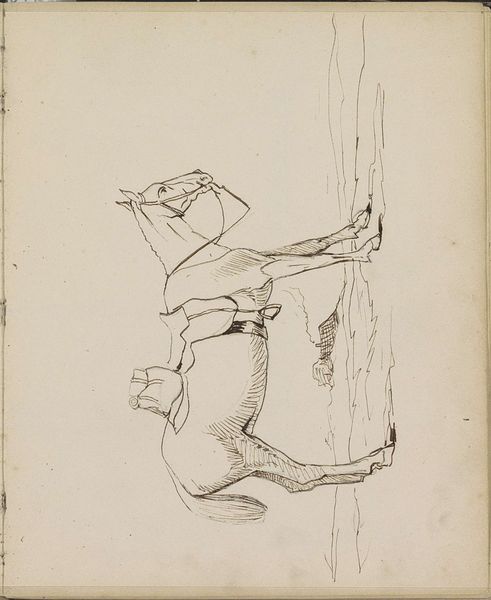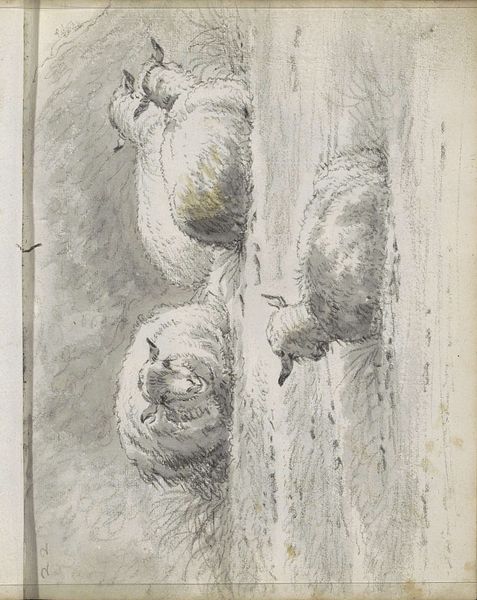
drawing, pencil
#
drawing
#
amateur sketch
#
light pencil work
#
pen sketch
#
pencil sketch
#
landscape
#
figuration
#
personal sketchbook
#
ink drawing experimentation
#
pen-ink sketch
#
pencil
#
sketchbook drawing
#
pencil work
#
sketchbook art
#
realism
Copyright: Rijks Museum: Open Domain
Johannes Tavenraat made this drawing of a cow and a cow’s head in the Netherlands in 1860. It offers an intimate look at the artist’s process. Dutch artists in the 19th century were often preoccupied with depictions of rural life. Cows, in particular, held symbolic weight, representing the agricultural basis of the nation’s economy and culture. The directness and simplicity of Tavenraat’s sketch is striking. The cow isn’t idealized or sentimentalized. It’s presented as a creature observed and recorded with minimal intervention. This drawing reflects a broader shift in artistic practice. Artists moved away from formal, academic styles and instead embraced a more immediate, naturalistic approach. This approach also mirrors a growing interest in scientific observation and documentation. Understanding this sketch means considering the interplay between artistic expression, cultural values, and the changing role of art in society. Resources in agricultural history, art criticism, and the artist’s biography can help us understand it better.
Comments
No comments
Be the first to comment and join the conversation on the ultimate creative platform.
